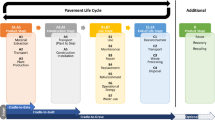Summary
Terrestrial photogrammetry has been applied during a rock slope stability investigation at Tremadoc, North Wales. The need to carry out engineering geological mapping was highlighted by an inspection of the relict coastline lying adjacent to the north side of the village, which showed the naturally occurring rock face to be in a poor condition. The problems identified indicated that continuous ravelling of small blocks would occur and, more importantly, that sections of the face—up to several hundred tonnes of material—were potentially unstable.
The decision to use photogrammetry was made owing to the inaccessibility of the rock face, the need to produce accurate geotechnical plans and provide joint orientation data for specific discontinuities. After preliminary discussions a specification was drawn up which ensured close cooperation between the engineering geologist and the survey firm, enabling a maximum amount of geotechnical information to be processed efficiently and presented on the base elevations. The elevations were then checked by the engineering geologist and developed into a form suitable for use in a slope stability study.
This method is estimated to be cost-effective for areas of rock slope in excess of 2500–4000 m2 when compared with other forms of engineering geological mapping on projects where remedial measures are necessary—these limits relating to design stage investigations rather than to feasibility studies. For feasibility studies these limits would need revision unless the survey was also required for topographic purposes.
Résumé
La photogrammétrie terrestre a été appliquée au cours d'une recherche sur la stabilité d'un talus rocheux, à Trémadoc (Nord du Pays de Galles). C'est au cours d'une inspection de la ligne de rivage, voisine de la partie nord du village, que fut constaté le triste état du front rocheux naturel; on décida donc de lever une carte géotechnique. Les observations faites montrèrent que de petits blocs de roche se détachaient continuellement et, ce qui est plus important, que des pans du front rocheux, pouvant atteindre plusieurs centaines de tonnes, étaient potentiellement instables.
Comme le front rocheux était inaccessible, et qu'on avait cependant besoin d'avoir des plans géotechniques et de connaître l'orientation des diverses fissures, on décida d'employer la photogrammétrie. Après les discussions préliminaires, on établit un cahier des charges pour assurer une coopération étroite entre le géotechnicien et l'entreprise qui fit le levé et qui en présenta les résultats en élévation. Les élévations furent ensuite collationnées par le géotechnicien et développées sous une forme utilisable pour une étude de stabilité de talus.
Par comparaison avec d'autres méthodes de cartographie géotechnique employées dans des cas où des mesures confortatives sont nécessaires, on peut estimer que le coût de cette méthode est en rapport avec son efficacité, pour des aires comprenant plus de 2500 à 4000 m2 de talus rocheux; ces limites se rapportent plus aux études d'avant-project qu'aux études de faisabilité. Pour les études de faisabilité, les limites devraient être révisées, à moins que le levé soit aussi entrepris pour la topographie.
Similar content being viewed by others
References
ANON. (1972): The preparation of maps and plans in terms of engineering geology. Q.Jl Engng Geol. 5, 293–381.
ANON. (1977): The description of rock masses for engineering purposes. Q. Jl. Engng Geol. 10, 355–388.
CHEFFINS O.W.—RUSHTON J.E.M. (1970): Edinburgh Castle Rock: A survey of the north face by terrestrial photogrammetry. Photogrammetric Record 6 (35), 417–433.
DEARMAN W.R.—FOOKES P.G. (1974): Engineering geological mapping for civil engineering practice in the United Kingdom. Q. Jl. Engng Geol. 7, 223–256.
HOEK E.—BRAY J.W. (1977): Rock slope engineering. IMM, London.
MOORE J.F.A. (1974): Mapping major joints in the Lower Oxford Clay using terrestrial photogrammetry. Q. Jl. Engng Geol. 7, 57–67.
ROSS-BROWN D.M.—WICKENS E.H.—MARKLAND J.T. (1973): Terrestrial Photogrammetry in open its: 2—an aid to geological mapping. Trans. Inst. Min. Metall. 82, A115-A130.
TERZAGHI R.D. (1965): Sources of error in joint surveys. Géotechnique 15, 287–304.
WICKENS E.H.—BARTON N.R. (1971): The application of photogrammetry to the stability of excavated rock slopes. Photogrammetric Record 7 (37), 46–54.
Author information
Authors and Affiliations
Rights and permissions
About this article
Cite this article
Fookes, P.G., Powell, D.B. & Mercer, R. The application of terrestrial photogrammetry at Tremadoc, North Wales, and an estimate of its cost-effectiveness in relation to a slope stability study. Bulletin of the International Association of Engineering Geology 19, 159–165 (1979). https://doi.org/10.1007/BF02600470
Published:
Issue Date:
DOI: https://doi.org/10.1007/BF02600470




